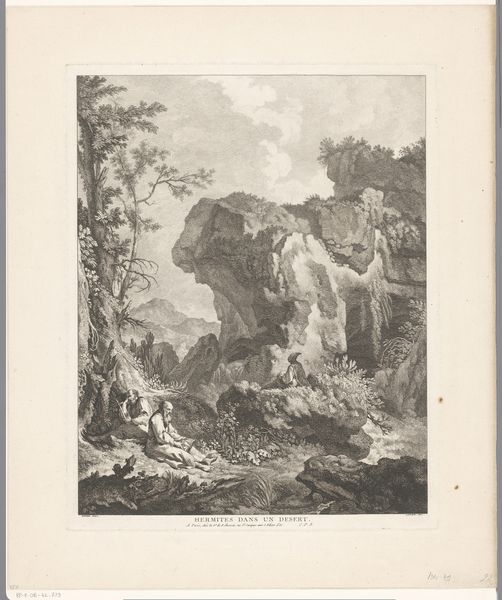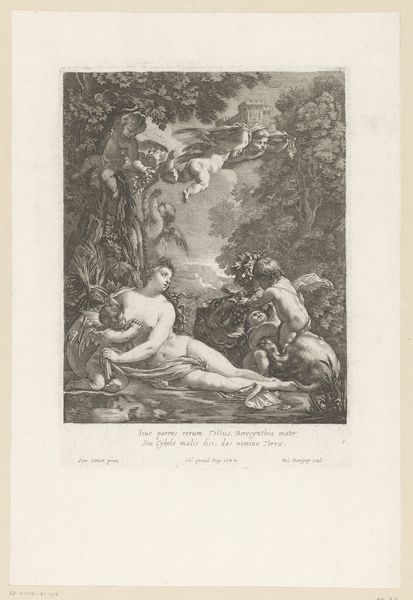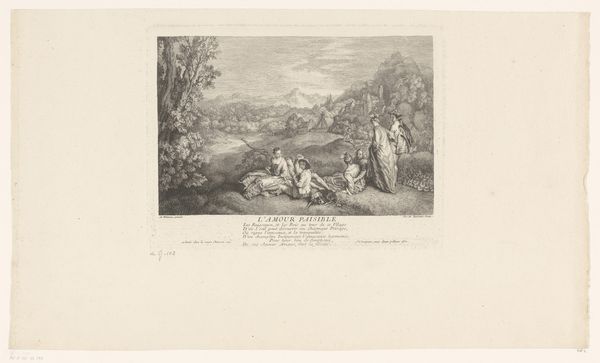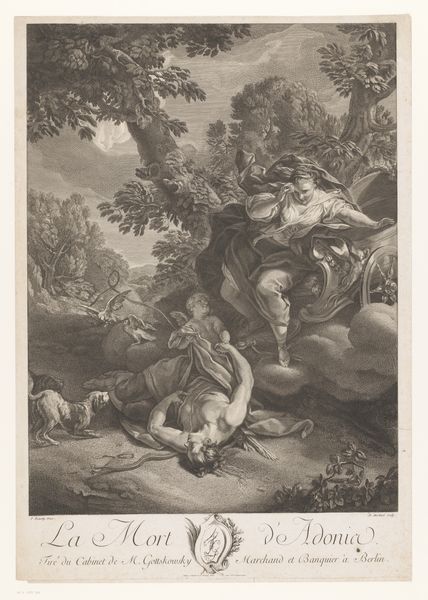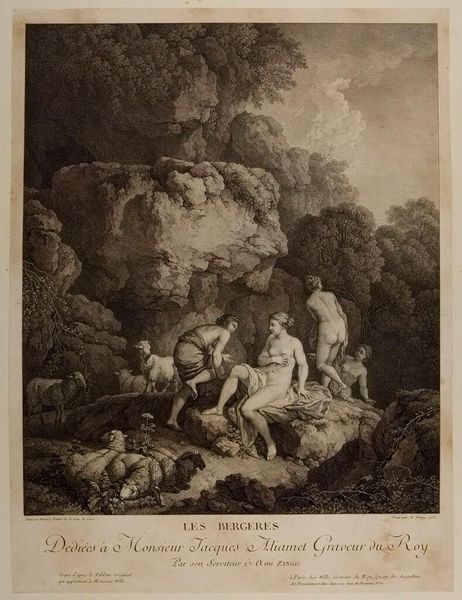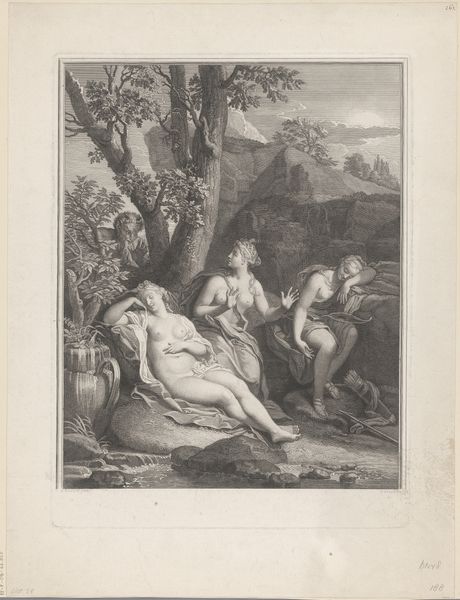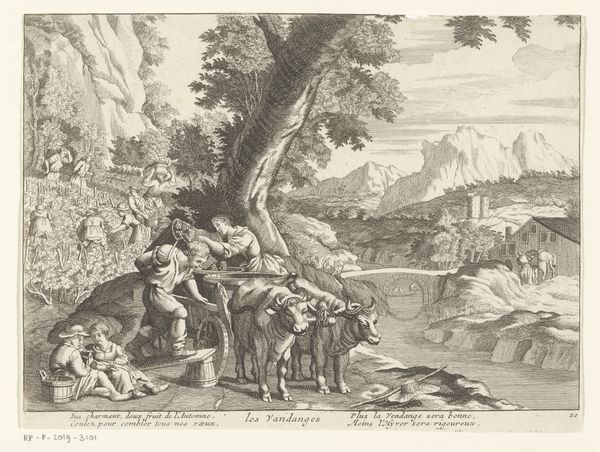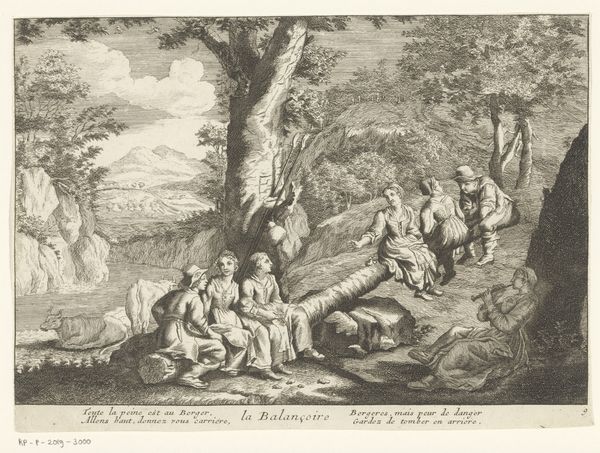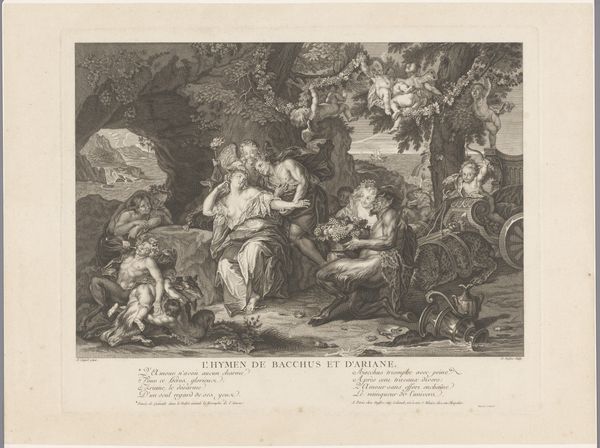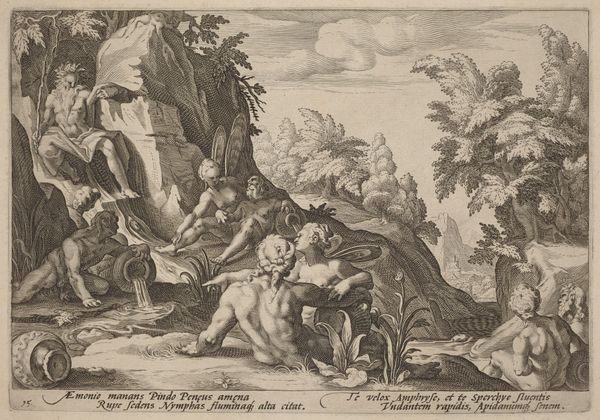
Dimensions: height 513 mm, width 385 mm
Copyright: Rijks Museum: Open Domain
Curator: So, what jumps out at you about this engraving, “Four Naked Shepherdesses in a Rocky Landscape” by Adrian Zingg from 1763? Editor: The scene feels very staged, almost theatrical. The figures, though ostensibly shepherdesses, seem more like models posing in this fabricated pastoral setting. What does this type of scene tell us? Curator: It highlights the tension between idealized representation and the lived reality of labor in 18th-century Europe. The printmaking process itself, the meticulous work of the engraver replicating an image, filters the original scene even further. Think about the materials used – the paper, the ink, the metal plate – all products of specific economic and social conditions. Editor: That's interesting. I was just focused on the artistic elements, like composition. So, you're saying the actual process of *making* the artwork is key to understanding its cultural relevance? Curator: Absolutely! Who was this engraving made *for*? A wealthy patron, no doubt. This is a commodity, meant for consumption by a specific social class. It speaks volumes about how labor, both that of the shepherdesses and that of the artist and engraver, is viewed and commodified. Consider, for example, the role that Jacques Aliamet had to play, being adulated in the texts beneath the artwork. Editor: It changes my perspective, thinking about the socioeconomic aspect embedded in this apparently carefree artwork! Curator: Exactly! Next time you see something idyllic, try looking at its making; whose labor enabled its creation and consumption? Editor: It sounds as if, to truly understand art, we need to focus less on pure aestheticism and consider the cultural impact of material history. Curator: Indeed. The materiality is never neutral.
Comments
No comments
Be the first to comment and join the conversation on the ultimate creative platform.
